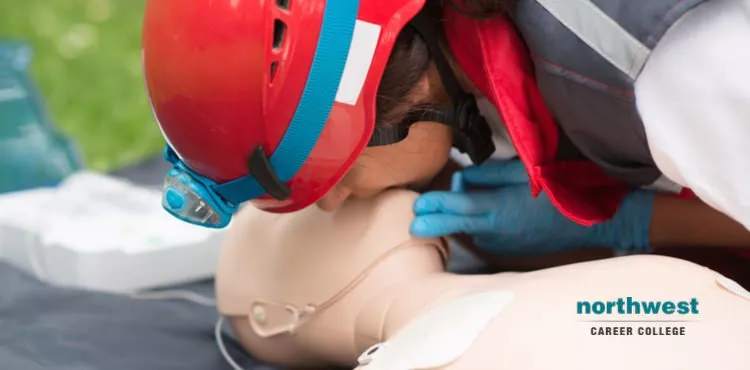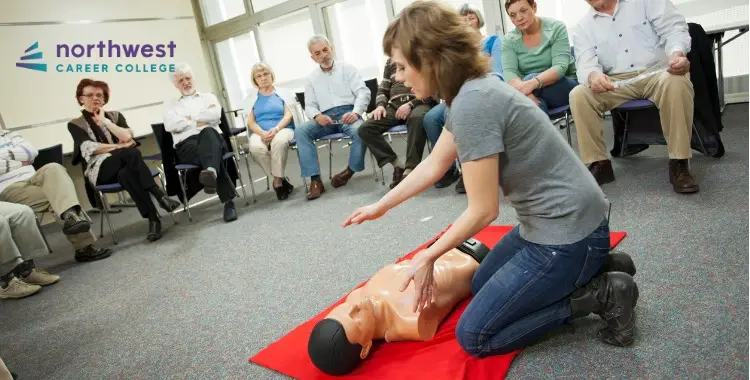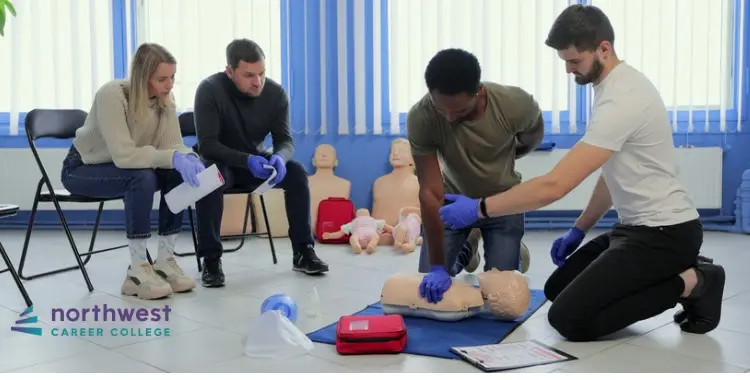Rescue Breathing vs. Chest Compressions
- CPR
- March 11, 2024
- 3.0k views
- 3 min read

Surveys have shown that touching lips with a stranger to perform rescue breathing, and the associated health risks of that action, is one of the main reasons a cardiopulmonary resuscitation (CPR) trained individual might refuse to provide CPR to a victim. Thankfully, rescue breathing is not always required, as multiple studies have shown that chest-compression-only-CPR can be just as effective as CPR with rescue breathing when it comes to cardiac arrest.So what is rescue breathing and when should it be used.
Table of Contents
Rescue Breathing vs. Chest Compressions
What Is Rescue Breathing?
Rescue breathing is a technique used to manually push oxygen in and out of a victim’s lungs when their own body isn’t capable of completing the task on it own. This can be achieved using equipment such as breathing pumps, but for most emergency situations it is normally down to the CPR trained individual to perform mouth to mouth breathing, pinching the victims nose while placing their mouth over the victims mouth before breathing out to inflate the victim’s lungs.
When To Use Rescue Breathing
There are a number of emergency scenarios that still require the use of the rescue breathing technique, such as:
- Drowning
- Drug overdoses
- If the victim has collapse due to breathing trouble
- Unresponsive infants/children
- An unconscious adult that isn’t breathing normally
- Prolonged cardiac arrest victims
How to Rescue Breathe?
- Place the person on their back.
- Tilt their chin up to open the airway.
- Check to see if there is anything in their mouth blocking their airway.
- Plug their nose with one hand, and give two even, regular-sized breaths. Blow enough air into their lungs to make their chest rise. If you don’t see their chest rise out of the corner of your eye, tilt the head back more and make sure you’re plugging their nose.
How Often To Use Rescue Breathing:
According to the American Heart Association (AHA), one rescue breath can be given every 6 to 8 seconds and the breath should take approximately 1 second to administer. Giving too many CPR rescue breaths, or what the AHA refers to as “excessive ventilation,” is not recommended.
When To Use Hands-Only CPR
Sudden cardiac arrest is one of the main killers of adults in America with nearly 900 Americans falling victimto it every day. Studies done by the AHA have shown that performing chest-compression-only CPR on a sudden cardiac arrest victim has the same statistical odds of saving a person’s life as CPR with rescue breathing. While anyone can provide CPR assistance, taking part in one of our CPR courses gives you the skills, techniques and confidence you’ll need to potentially save a life.
Free CPR Courses
Here at Northwest Career College we are committed to providing affordable, quality CPR Classes to the Las Vegas community. We pride ourselves on being an American Heart Association (AHA) testing center and we offer Las Vegas CPR classes designed to fit your personal needs and professional schedule. As part of our “student-focussed” approach to education we also off our CPR classes free of charge to all of our students. Call us today on (702) 403-1592to book your CPR class and become qualified to save a life in just 4 hours!



